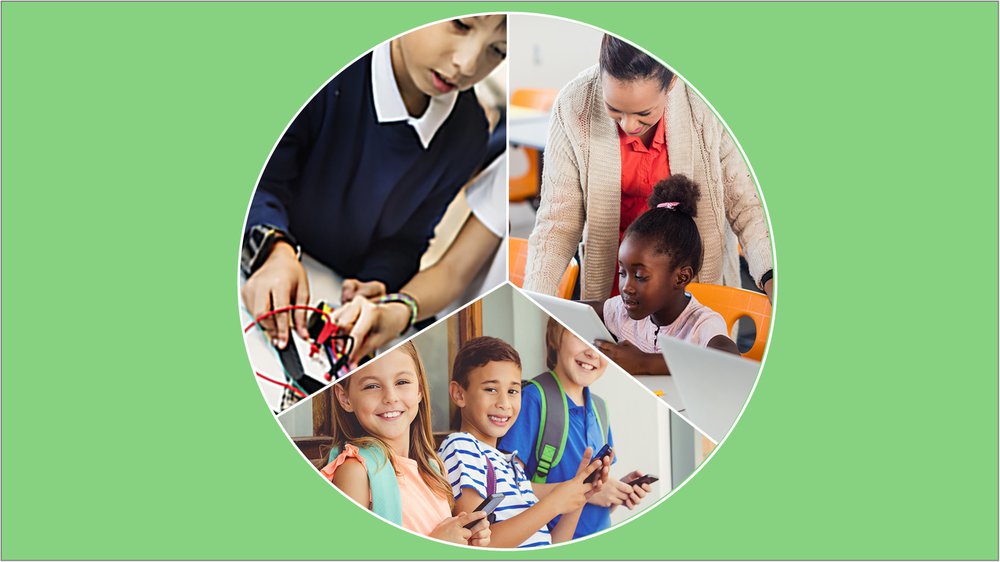Are we making things worse in the name of making things better? Can we ever scale change that will make a difference in the lives of the kids that need it the most? Can great things transfer across schools, leaders, and platforms of learning or does everyone have to reinvent the work?
I’m sometimes left with a hopeless feeling that our work in this evolution of teaching and learning won’t be utilized or even recognized for what it can do to help hard working educators. My questions leave me seeking allies and others so the burden can be just a bit lighter. These questions also lead me to another set of questions.
Can educational innovations play nice together? Do there have to be winners and losers? Is there a universal grand theory for how all of the solutions fit together? Consider these examples I’ve curated here, about sets of competing ideas that fill our innovation tanks and charge up our change agents.
Competency-based Learning vs. Project-based Learning
Let’s start with competency-based learning and project-based learning. How do these two play well together? Can we have playlists for learning while we still have real-world projects that are cross curricular in nature? If not, which wins? If so, how does it work?
Pam Hernandez, superintendent of San Antonio Union School District (CA), sees the two as complementary approaches that given the right conditions can work. “The key to success is creating spaces that allow for the direct instruction of concrete skills while also pursuing their application in a project based learning environment.”
Kerry Gallagher, Digital Learning Specialist at St. John's Prep (MA), extends on this idea “when students are able to demonstrate mastery of competencies through real-world project based tasks, they are truly invested in their learning. As educators, it is our job to find the switch that triggers that investment by getting to know our students even better than the standards.”
When it comes to grading, how do we have a push for narratives and standards-based grading when our classrooms are filled with points for both academic purposes and behavior purposes? Can we have points and words? Does one need to win? Can we have them play nice together?
Standards and How We Measure Growth
Supervisor of Instructional Practice K-12 at Salisbury Schools (PA), Ross Cooper, states: “If students are going to create digital portfolios, publishing work by academic standards makes sense. This way, students can be a part of a process in which they continuously self-assess by identifying “where they are” and “where they need to go” in regards to specific proficiencies.”
This ideal of measuring growth over time in authentic ways continues to be elusive in most schools where points, averages, and grades absorb most of the conversations. For these same schools, other mixes of solutions struggle to exist in the same sandbox as well. This includes blending concepts like restorative justice and suspensions.
Student-Centricity and Choice
Justin Aglio, Director of Innovation at Montour School District (PA), strikes a hopeful tone that focuses on the systemic issues surrounding and shaping student behavior in schools. “As districts design more responsive learning environments to customize pathways for all learners, students will feel more valued and realize their personal potential. Let's create schools with a humanity-centered focus using skills and strategies to solve real-world community problems. As schools get more youth voices involved, students will be more likely to lead and not leave.”
Dan Ryder, Maine educator and design thinker, sees a need to personalize services beyond academics, “Just as we champion multiple pathways to academic and vocational knowledge and skill sets, we must present students a variety of opportunities and settings in which to develop their social and behavioral capacities. This type of change isn't easy, and it isn't quick, but then again, neither is managing a status quo reliant upon a punitive culture of compliance.”
These topics have always been central to my work, including how do we best balance green time and screen time for all students. We need to maximize both their understanding of environmental education and technology integration.
Nature vs. Technology
Missouri educator, William Chamberlain, said, “I'm not a big fan of the nature or technology narrative. Look at any biking, hiking or running magazine today, they are all being augmented with the tools students carry in their pockets. The real problem is that kids don't get to spend time outside exploring during the school day.”
Chamberlain continues by saying, “the narrative that we are being sold is that technology can't mix with an outdoor lifestyle. We are being told that kids would rather be on their phone than out riding a bike when the reality is they are riding their bikes, recording the ride and uploading it to social media so their friends can share in the experiences. I guess what it all boils down to is instead of creating artificial limits for our students, we need to expand their opportunities to explore natural surroundings with the technology they already use daily.”
All of these topics seem like part of a solution, but it also appears that none fit together into a package that will maximize the learning of kids. Moving 100% in one direction without flavors of some of the other solution may seem like the right thing, but in reality, it may only be getting us towards 70-80% of the best possible outcome. Solutions are easy. Solution making is hard.
The quest for answers often leads to more questions. The quest for conversations often leads to more confusion. When we realize what we know, we finally realize what we don’t know. We are certainly in a time when solutions, ideas, and resources are plentiful, how we craft and mold them into the right mix seems to be the next set of conversations for us all.











